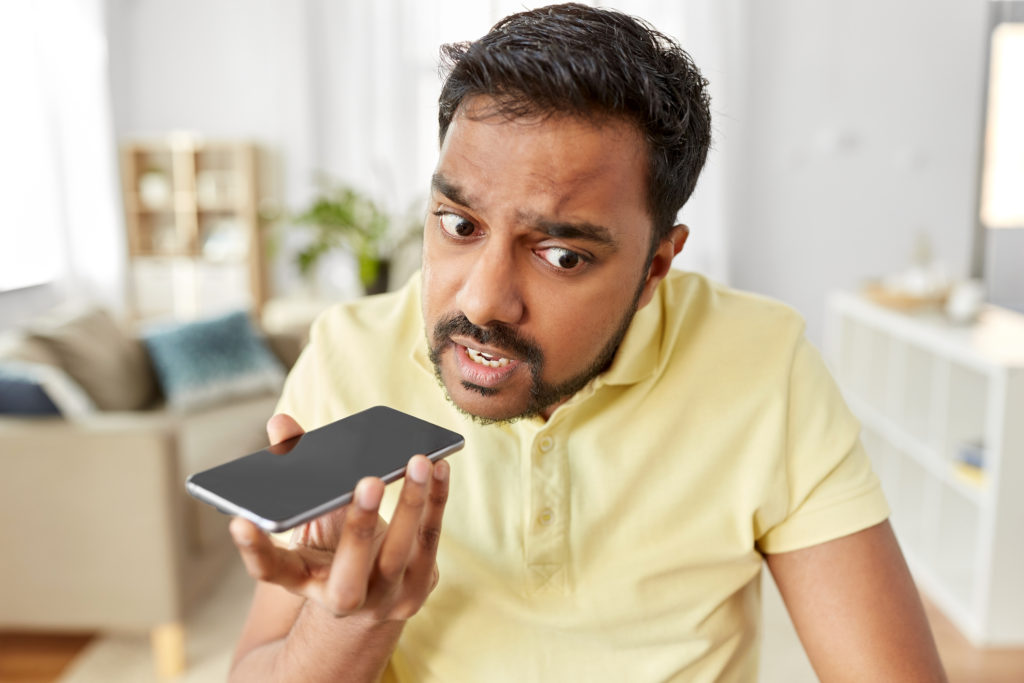On average, Americans receive almost 30 spam calls per month. If you tried to call back the number, you might find it's reported as out of service or disconnected. This can be super annoying. What causes a call from disconnected numbers, and is it dangerous to call back an out-of-service number?
Generally, a call from a disconnected number is a robocall. Automated phone systems frequently use caller ID spoofing to place telephone calls from out-of-service numbers to prevent callbacks. While recipients can defend against spoof calls, scammers have various motives for robocalling.
Read on to learn the following:

What Is Caller ID Spoofing?
Caller ID Spoofing is a malicious act of falsifying a caller's information to indicate to the receiver of a call that the originator of the call is a station other than the true originating station. It involves masking a caller's numbers to disguise the real identity.
We know that a caller ID is a way for people to see who is calling them on the phone. A caller ID started a long time ago, as far back as 1968 when a person named Theodore George Paraskevakos made a special machine that could tell you the phone number and where the call was coming from.
But now, scammers can mask their caller ID with Voice over IP (VoIP) systems or internet calls to pretend to be someone else when they call.
These VoIP systems allow users to display any desired phone number as the caller ID so attackers or telemarketers can easily spoof an out-of-service or disconnected number. There are even cases where criminals spoof their caller IDs with real company numbers or neighbors to gain the recipients' trust.
Why Do Robocallers & Scammers Call From Disconnected Numbers?
Robocallers and scammers often call from fake, disconnected numbers to stop the recipient from calling them back. They use disconnected numbers to make it difficult for people to trace their calls.
Scammers know that after defrauding a target, some attempts will be made to track and apprehend the perpetrators. So, scammers hide their phone numbers and use fake disconnected numbers to try and stay one step ahead of the authorities. It is harder for authorities to trace a call that appears to be coming from a disconnected number.
Additionally, robocalls and scammers use disconnected numbers to make it appear as if the call is coming from a legitimate source, such as a government agency or a bank. This can trick people into answering the call and falling for the scam.

Is Caller ID Spoofing Legal?
Caller ID Spoofing is legal in many countries. However, in the US, under the Truth in Caller ID Act of 2009 and the Anti-spoofing Act of 2017, spoofing is illegal when the intent is harmful, wrongfully obtains valuables, or defraud.
This means legal spoofing is when the intention is not to cause cheat, harm, or wrongly access anything valuable. Companies offering spoofing services are often fined or blocked.
The anti-spoofing legislation bill (s.134) was introduced to the house by Senators Fischer, Blunt, Nelson, and Klobucher on January 12, 2017. The bill's purpose was to extend the Federal Communications Commission's (FCC) authority to address spoofing cases in the US.
The bill also empowers the Commission to combat international spoofing involving text messages and calls from disconnected phone numbers. The legislation also allows FCC to levy criminal fines and penalties against culprits.
The anti-spoofing Act of 2017 prohibits individuals and entities from transmitting the wrong caller ID intended for harmful acts against the receiver. Under the Act, the FCC can penalize the violators with a fine of $10,000.
However, scammers ignore the rule, especially those from countries outside the FCC jurisdiction. Many of them also continue their operations hoping not to be caught.
Does a disconnected number ring?
A disconnected number doesn't ring.
When you call a disconnected number, you'll hear the announcement that your call cannot be completed or that the number you're calling is incorrect or out of service. The intercept operator may also announce that the number has been disconnected.
However, if the number is non-existent, there will be several beeps or a recorded message since there's no valid identity tied to the number.
Sometimes, scammers produce a fake disconnected tone or message to deceive the caller into thinking that their number has been disconnected.
How To Call Back A Suspected Spoofed Number
Calling back a suspected spoofed number is possible but not recommended.
You can use the vertical service code *67 to hide your number for a single call. Dialing this code on your keypad before adding the suspected spoofed number will mask your cell phone number. The scammer will not see your numbers when receiving the calls. They'll see your number as blocked or private.
Another way of calling back a spoofed number is by using a burner phone. Burner phone lines prevent an attacker from receiving your regular line.
After a short use, a burner line can be discarded along with any problems that arise from calling back a spoofed number. Burner phones or burner apps can be bought anonymously or pseudonymously.

Why You Might be Getting the "Unallocated Number" Message
Are you getting the "Unallocated phone number," or "Number of out of service," message when you call back a number that has just called you? How is that possible?
There are two main reasons for this. One, the phone number you call is not assigned to any provider by the administrator, or two, the phone number is yet to be allocated to an end-user.
Another common reason is spoofed or disconnected phone numbers. The numbers are generated by the software and used by scammers, spammers, robocalls, and telemarketers. They make the call look real, thus increasing the chances of you picking up the call.
Other reasons;
Wrong number: Recheck the disconnected number you are calling and confirm if there are any replaced or missing digits. Calling the wrong number can make you get the message.
Network Problem: If there is lagging or a malfunction with the calling network, such a problem can occur. This is usually temporary and will be solved in a bit.
Due Phone Bill: If a user does not pay their phone bill in time, the company can restrict or shut down their carrier system. This will continue until the person pays their invoice.
If the problem persists after checking all the above, the next thing you need to do is to contact your provider and request them to check your system.
If you are using Google Voice, here's how you can solve the issue.
Head to Google Voice settings and confirm the phone number is at the top
Key in your number and confirm the carrier.
You can also head to the Google Voice account recovery page and try recovering your number to determine if you can receive messages from Google.

How To Stop Robocalls From Any Number Including Disconnected Numbers
If you don't want to receive unwanted calls from disconnected numbers or robocalls, you can do the following:
Stop putting your actual number on the internet.
Putting your real telephone number on the internet makes you vulnerable to robocalls and malicious calls. If you must add a phone number to an online account, use a personal burner phone number or work phone to reduce access to your personal life.
Use call screening
Call screening is a process of selecting the calls you accept or reject based on the caller ID.
One of the simplest ways to screen your calls is to enter phone numbers in your contacts and only accept calls from registered numbers.
Another way is to enable the call screening feature on your smartphone. Once enabled, it evaluates every call to determine if the number is unknown, blocked, or disconnected. With such information, you can decide whether to answer the call.
Many phones have call-screening features. But you can also get the Google call screening for your phone. With the app, Google Assistant will automatically screen calls that aren't stored in your contacts list.
Apart from the Google call screening app, there are other call screening apps and services to use on your phone.
Install a robocalling blocker
Several robocall blocker apps can help keep incoming calls from disconnected numbers away from your phone.
For mobile phone users, take a look at some of the following services that stop robocalls.
For a budget-friendly option, take a look at Truecaller for call screening. The app has a feature called 'block number series." And because the neighborhood scam usually appears with digits similar to your phone number to try and trick you into picking the phone, you can block all the numbers that match the digits of your number.
Call Control Home can help protect your landline from scam calls.
Register with the National "Do Not Call" registry
The National Do Not Call registry keeps your number safe from telemarketers. Once you add your number to their list, you're legally off-limits for telemarketers. Moreover, you're free to remove your phone line from the registry at any time.
Block unwanted calls with carrier tools
You can use premium tools from your telephone company to at least reduce robocalls.
Service providers like AT&T, Verizon, T-Mobile & Sprint offer opt-in solutions to screen and block unwanted calls.
Most of the options are premium functions which are additional fees charged to your phone bill. This can be an effective way to stop calls from spoofed, disconnected numbers.
How to Check the List of Disconnected Phone Numbers
Some services like CleanMyPhones.com have a frequently updated register of millions of disconnected phone numbers.
All you have to do is upload your file and it will do an analysis and tell you how many disconnected or out-of-service numbers are on your list. You can then use this list to determine if any numbers that call you are disconnected.
Another great option that can help you check a list of disconnected phone numbers is UpdateYourList.com DIY Portal. It allows users to search business and residential telephone databases for disconnected numbers.
Also, companies and government agencies are taking various measures to find disconnected numbers or spoofed numbers and block them. For instance, in the United States and Canada, phone carriers are now required to implement the STIR/SHAKEN Caller ID authentication framework.
It is designed to counter number spoofing through a multistep approach and determine the authenticity of calls. If the call cannot be verified, it is blocked automatically by the service provider. Be sure to ask your service provider if they have implemented this framework.